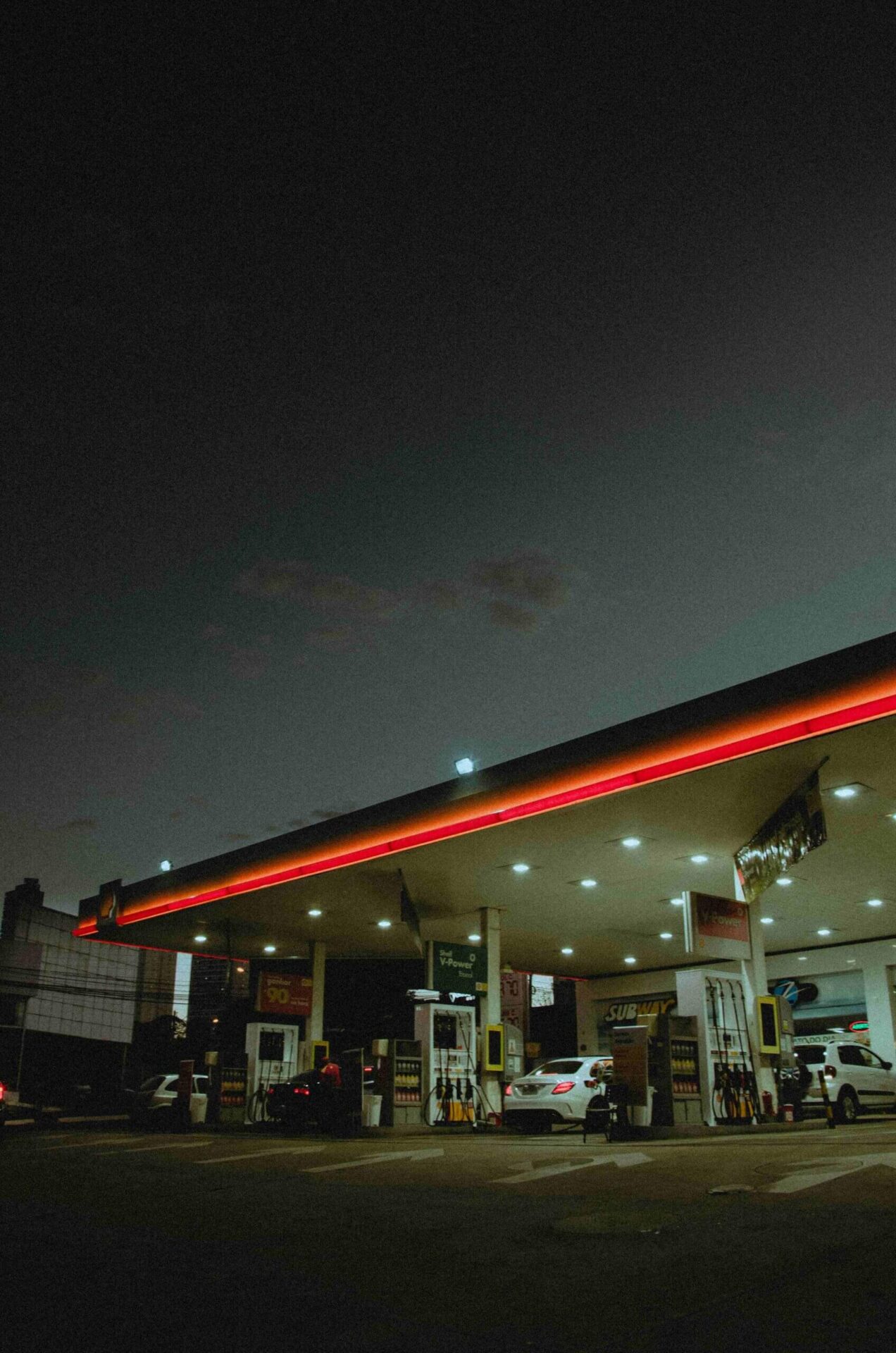Oil prices dipped slightly on Tuesday as commodities moved lower, after Israel and Hamas signalled that a truce may be near in the battle for Jerusalem.
However, continuing airstrikes in the Red Sea and a pending meeting of the U.S. Federal Reserve overshadowed the latest developments.
Commodity trends: Opportunities for traders
Commodities are drawing close attention from investors, who are waiting to cue in on any physical trader buying as the Fed meets on Wednesday for the latest on interest rate tweaks.
Brent crude futures for June, which expire on Tuesday, rose 26 cents to $88.67 a barrel, while the more active July contract rose 38 cents to $87.58 per barrel around 1101 GMT.
Forex forecast – inflation, currencies, and more!
U.S. West Texas Intermediate crude futures rose 34 cents to $82.97 a barrel.
Commodity trends: Middle East tensions
However, early-week enthusiasm – driven by renewed hopes of a ceasefire between Israel and Hamas – stalled oil prices amid commodities generally as refinery runs fell and inventory rose, according to the Commerzbank analyst Carsten Fritsch.
Meanwhile, continuing attacks by the Iran-backed Houthis on maritime shipping south of the Suez Canal have sustained oil prices with the risk premium that such actions entail concerning crude flow disruption.

Commodity trends: Fed Rate Hikes
With the commodity trend top of mind, the market is also preparing for potential reactions from the upcoming Federal Reserve meeting, where stubborn inflation could prevent any rate cuts, and the US dollar could rise instead, pressuring oil demand.
Investors are wondering whether interest rate hikes will happen both this year and next given the stickiness of inflation and the labour market, commodity trends and investor sentiment.
Commodity trends: Marathon Petroleum
Shares jumped on Tuesday as the top US refiner Marathon Petroleum beat on first-quarter profit expectations, thanks to strong demand for refined products and a tightening of fuel supplies due to refinery maintenance and disruptions in Russia, which should put further upwards pressure on commodities.
The company also increased its share repurchase authorisation by $5 billion.
Refinery maintenance and outages at Russian facilities, and Ukrainian drone attacks on Russian targets, put pressure on supplies of refined products.
Commodity trends: Fuel demand rises
Even so, fuel demand held up, with US product supplied – a measure of demand – averaging 20.10 million barrels per day (bpd) as of the end of March, up from 19.7 million bpd a year ago, according to the US Energy Information Administration.
Latest stock news: Adidas wins, Tesla under fire!
Marathon said it planned and completed a quarterly high of $648 million in turnaround work in the quarter to run utilisation at only 82% in the quarter that also suppressed refining operating costs per barrel to $6.14.
The company’s square-footage running quarterly was slightly lower at 2.7 million bpd, up from 2.8 million bpd a year earlier, with the next quarter expected to be at 2.97 million bpd.

Commodity trends: Good stock
On the bottom line, the refining and marketing segment of Marathon posted earnings of $766 million, against an analyst consensus (that is, the average of all estimates from Wall Street plebiscitators) of $574 million.
Despite the large profitability beat, refining and marketing margins contracted by more than 27% to $18.99 per barrel year over year, a normalisation of margins and therefore profits that had erupted in 2022, when the world was reeling from the invasion of Ukraine, an event that defined commodity trends of the past year or so.
Commodity trends: Russian oil price cap
At its Findlay, Ohio refinery, the company said it earned $2.58 a share for the three months ending 31 March, better than the $2.42 forecast among analysts.
A coalition of Western insurance companies has denounced the implementation of a Russian oil price cap, calling it ineffective and prompting more and more ships to join a ‘shadow fleet’.
The outcry is a strong rebuke of a policy designed to curtail Kremlin revenue and help stabilise global energy prices as commodity trends continue to shift.
The G7 introduced the cap at the behest of the United States to keep the flow of Russian oil below $60 per barrel, in an effort to stave off energy price spikes during the Ukraine war, while also cutting off financial dollars to the Kremlin.
Meanwhile, the International Group of P&I Clubs, which insures most of the world’s marine cargo, wrote in a statement – which was later entered into the record at a UK parliamentary hearing – that the cap had cumulatively failed to achieve its objectives in the two years since it was implemented.
This was because Russia utilised its own fleet and vessels beyond its control to wreak global havoc on commodity prices (an estimated 800 tankers have left the club due to the cap, it said, offering a glimpse into how the cap was a factor in everything from trade patterns to commodity trends).
While the programmes face some difficulties – such as business people in the US working to evade sanctions, or the fact that these sanctions have still not significantly dented Russian revenue – both US and European Union officials believe that the cap has so far been successful because it helps lower oil revenues without causing a supply disruption and straining price stability.
Enforcement by US Treasury officials have made it more difficult for vessels willing to carry Russian crude, at a time when fewer tankers are available and prices are higher than usual on international markets.
At the hearing, Tom Keatinge, director of the Royal United Services Institute’s Centre for Finance and Security, pointed to openly acknowledged breaches of the cap in the jurisdictions of the UK and the G7, and argued that some of the insurers were contravening the cap.
International trade and commodities flows are deeply dynamic and only partly predictable.
They occur in a geopolitical space where the interaction of all the great powers, including Russia, plays a role.
A few months ago, a sizeable oil discovery off the coast of Namibia posed something of a problem for the Portuguese firm Galp Energia. Well, not a problem per se, but a challenge.
Portugal’s largest oil company simply didn’t have the bank balance to develop the Mopane field, so it will need to find a partner — one with a deeper purse and greater interest in fronting the capital costs, Galp’s CEO Filipe Silva told analysts this week.
In a nutshell, that’s an increasing feature of commodity developments.
Galp only last week completed the exploration phase in the Mopane field, estimating a minimum yield of at least 10 billion barrels of oil.
As such, the Mopane field has become a potential game-changer for commodity trading in the area.
Galp is already embarking on a sale of 40% of its 80% stake in the exploration block, sources told Reuters.
Silva was bullish that the project could be a new growth vector for Galp – the Mopane site, for example, would likely hold more than one Floating Production, Storage, and Offloading (FPSO) unit, requiring an investment in the tens of billions of dollars, he said.
‘Galp by itself cannot invest in something of this scale,’ Silva said.
The company was doing what others were doing, moving with the commodity trend.
Also, in Mozambique, he pointed to the need to reduce the risks for the multibillion-dollar global natural gas project in the Rovuma basin, where Galp has a 10% stake in a consortium led by Mozambique Rovuma Venture (70% stake) with the American oil giant Exxon Mobil, the Italian oil and gas company ENI and the China National Petroleum Corporation.
The sector’s energy commodity trends reflect the mixed geopolitical and financial dynamics.
Coca-Cola raised its outlook for annual organic sales growth after revenue and profits beat expectations in the first quarter, fuelled by strong consumer spending on the company’s premium sodas and juices around the world.
Demand for higher-end beverages outside the home is growing, particularly in the US, where Americans have been happy to dish out more expensive drinks while at the movies or out eating.
As the world’s largest soft-drinks manufacturer, Coca-Cola is benefiting from strong international demand, in Europe and Latin America in particular.
Innovations such as the relaunch of Georgia Coffee and reformulated Sprite have boosted sales in those regions, which eventually result in wider commodity trends.
In the first quarter, Coca-Cola reported a 15% increase in organic revenue in Europe, the Middle East, and Africa, and a 7% rise in North America.
The company reported an overall average selling price increase of 13%, while unit case volumes grew 1% modestly.
‘Coca-Cola is performing well from some countries from a foreign exchange perspective because those countries are more accustomed to inflation and, as a strong brand name, they don’t suffer disproportionately from price erosion,’ observed Christian Greiner, a senior portfolio manager at F/m Investments.
Coca-Cola is also doubling down on promotions, refreshing existing products and introducing new ones to meet rising consumer demand during this commodities cycle.
The company now expects organic sales growth of 8% to 9% in fiscal 2024, up from the expected 6% to 7%.
Coke’s first-quarter net revenue rose 2.5% to $11.23 billion, ahead of the LSEG consensus of $11.01 billion, and adjusted earnings rose to 72 cents per share, ahead of the predicted 70 cents.
Given these results, it’s no surprise that Coke kept its forecast for annual comparable earnings per share growth at 4% to 5%, which is a slight upgrade over its previous forecast.
Coke ‘gave a guidance boost but currency-wise, nothing is being changed from an underlying dollar value’, said Wedbush analyst Gerald Pascarelli.
World cocoa prices tumbled more than 20% in two days, with technical triggers causing what is already one of the most illiquid markets to fall in the most illiquid period in history, in a signal that will echo throughout commodities.
‘This market has seen a flight,’ even from the funds that normally fuel such moves, said a cocoa dealer in London on the dramatic rise in cocoa prices this year.
Before this week’s fall, cocoa futures on the ICE exchange, the global benchmark for pricing the bean, had almost tripled on bad weather and disease affecting the biggest producers, Ivory Coast and Ghana.
The sharp increase forced many traditional players in the physical market to pull back, with a corresponding increase in algorithmic day trading funds, which trade in response to technical signals, and which exacerbate the volatility, with so little liquidity around.
‘There’s no one bit of news that gets the market moving (now),’ said Jonathan Parkman, head of agricultural sales at Marex. ‘The thinness of the positions in New York, the record low, means that liquidity moves are magnified.
The news that hit cocoa markets on Monday was an almost 15% single-day loss in London cocoa futures, their largest ever one-day drop.
As of midday GMT on Tuesday, they’d lost another 4.4% to 7,340 pounds per metric ton.
July New York cocoa futures lost 5% to $8,500 a ton, after shedding nearly 16% the previous day.
The commodity trends have been particularly volatile due to huge recent changes.
This is because the market will start paying more attention to crop developments through the rest of the season in the Ivory Coast and Ghana, to see if there’s any chance of a recovery







